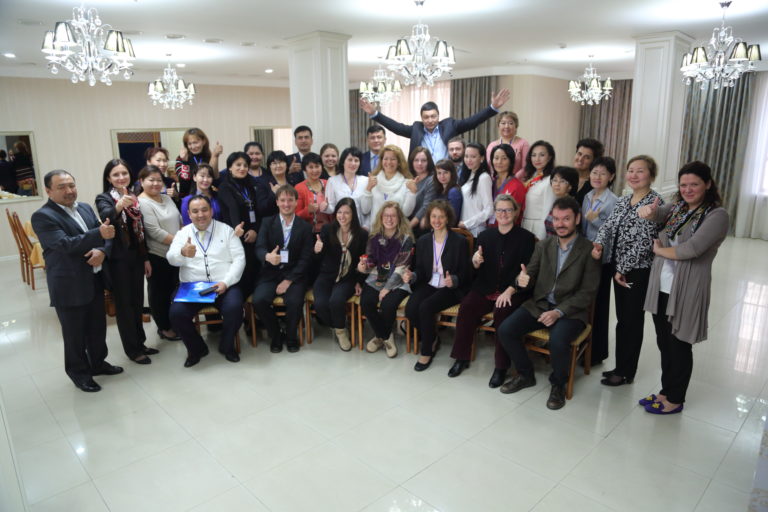The Astana Recommendations

THE ASTANA RECOMMENDATIONS
Cancer control is high on the global political agenda. As part of the Global Monitoring Framework, WHO Member States are being asked to collect cancer incidence, by type of cancer, per 100,000 population and thus establish population-based cancer registries. Following the first International Agency for Research on Cancer (IARC) cancer registration course in Russian, held in Astana on 22-26 September 2014, with participation from Azerbaijan, Belarus, Georgia, Moldova, Mongolia, Kazakhstan, Kyrgyzstan, Russia, Tajikistan, and Uzbekistan, we propose a set of recommendations to enhance the availability and quality of population-based cancer registration in CIS countries. This will ensure data comparability at national, regional and international levels for cancer control action. IARC and the Izmir Hub aim to monitor the developments within the region, and provide support and training where needed.
SHORT-TERM (within one year):
- Document the registration procedures in a procedures manual containing information on: data collection, list of reportable cancers, instructions on abstracting and coding (including coding lists as appendices), reporting of the results and release of data.
- Prepare written guidelines in your language in accordance with international guidelines (see references 1 and 2) to ensure comparability (incidence date, basis of diagnosis, multiple primary cancers, data confidentiality).
- Keep/create the electronic database of individual data for your population. This database should include the minimum dataset for cancer registration. The software used should have the functionalities necessary for cancer registration, such as in CanReg5 (eg. data linkage, identification of duplicates, registering and reporting multiple primary cancers).
- Monitor data quality: provide data quality indicators (morphologically verified cases - MV%, cases registered only by death certificates - DCO%, mortality to incidence ratio M/I%, primary site unknown - PSU%) and use the IARCcrgTools program (free downloadable from IACR website) to check your data. Try to trace back DCO cases.
- Reported number of incident cases should include multiple primary cancers and DCO cases.
- Prepare annual reports according to international standards. Send a copy of annual report to IARC and the Hub.
- Develop a specific cancer registry website within your institution website. To whom it may concern Page 2 Ref.: CN/43/37 07 November 2014
- Use materials provided from the course for further education and training at the registry.
- Join the International Association of Cancer Registries (IACR) (enables information and networking with other registries, possibilities to attend meetings, fellowships). Submit data to IARC projects to ensure global visibility, comparability and use of data from your registry. LONGER-TERM:
- Initiate legislation on cancer registration (if none exists) to ensure access to data sources (including mortality data). Regulate legal status of the registry.
- Engage the stakeholders and encourage use of cancer registry data for cancer control.
- Advocate the translation of ICD-O-3 in your language.

